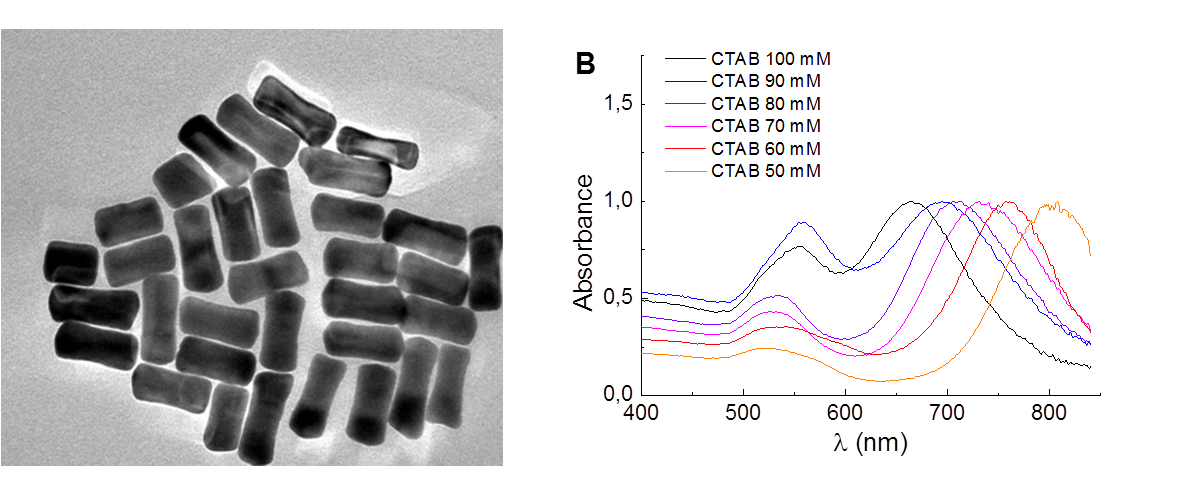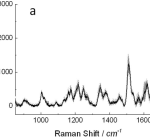Gold nanorods are an intriguing kind of nanoparticles characterized by superior plasmonic properties. Recently, they have been proposed for a number of biomedical applications spanning from therapeutic agent for cancer to diagnostics. Despite this huge interest, the synthesis of gold nanorods remains complex, not efficient and makes large use of an expensive reagent such as CTAB.
A new article from Labion, published on the Journal of Nanoparticle Research, takles this problem and explains how the use of hydroquinone as reducing agent makes possible to increase the yield of the reaction of about four times. Besides, we showed that the size and the aspect ratio of the obtained nanorods is primarly dependent from the amount of CTAB used. As last we demonstate that the particles with more elongated shape are obtained using half the amount of CTAB employed in the protocol used nowadays.
Overall this protocoll allows to reliably obtain gold nanorods with a significat reduction of cost and could allow an easier diffusion of the new medical applications of gold nanorods.
This result has been obtained thanks to the valuable collaboration of our partners at the Institute for Health and Consumer Protection of EU-Joint Research Centre (JRC), at the Nanobiolab of the University of Milano Bicocca and of the Complex Fluids and Molecular Biophysics Lab. of the University of Milano.
C Morasso, S Picciolini, D Schiumarini, D Mehn, I Ojea-Jiménez, G Zanchetta, R Vanna, M Bedoni, D Prosperi, F Gramatica “Control of size and aspect ratio in hydroquinone-based synthesis of gold nanorods” Journal of Nanoparticle Research, 2015, 17 (8), 1-7











